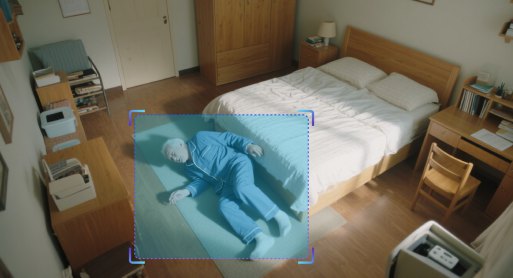
Behavior Recognition in Secured Areas

Algorithm Introduction
Utilizing AI vision algorithms to monitor abnormal behaviors such as loitering, lingering, line-crossing, falling, and wall-climbing in security-sensitive areas like campuses, factories, and parks. The system provides real-time detection and automated alerts for high-risk behaviors, while extracting human and facial features/attributes from alert events to enhance management efficiency for government and enterprise clients.
- ● Brightness requirements:
- Minimum bright pixel ratio (grayscale value >40) of 50% in pedestrian areas
- ● Image requirements:
- Optimal detection performance at 1920×1080 resolution
- ● Target size:
- Detection range: 32×32 pixels (minimum) to 512×512 pixels (maximum) for 1080p video streams
Application Value
-

Industrial Parks
Within the park, the AI vision algorithm detects abnormal human behavior to promptly detect lingering, line-crossing, and other incidents, ensuring campus safety and order. -

Manufacturing Facilities
For factory production areas, the AI algorithm accurately identifies unauthorized climbing, gathering, and other violations. Once detected, alerts are automatically triggered to prevent accidents from occurring. -

Public Parks
In high-traffic areas of the park, the AI algorithm monitors in real time, detecting people falling down and abnormal behaviors such as wandering, enabling rapid responses to safeguard visitor safety.
FAQ
-
Algorithm AccuracyAll algorithms published on the website claim accuracies above 90 %. However, real-world performance drops can occur for the following reasons:
(1) Poor imaging quality, such as
• Strong light, backlight, nighttime, rain, snow, or fog degrading image quality
• Low resolution, motion blur, lens contamination, compression artifacts, or sensor noise
• Targets being partially or fully occluded (common in object detection, tracking, and pose estimation)
(2) The website provides two broad classes of algorithms: general-purpose and long-tail (rare scenes, uncommon object categories, or insufficient training data). Long-tail algorithms typically exhibit weaker generalization.
(3) Accuracy is not guaranteed in boundary or extreme scenarios.
-
Deployment & InferenceWe offer multiple deployment formats—Models, Applets and SDKs.
Compatibility has been verified with more than ten domestic chip vendors, including Huawei Ascend, Iluvatar, and Denglin, ensuring full support for China-made CPUs, GPUs, and NPUs to meet high-grade IT innovation requirements.
For each hardware configuration, we select and deploy a high-accuracy model whose parameter count is optimally matched to the available compute power.
-
How to Customize an AlgorithmAll algorithms showcased on the website come with ready-to-use models and corresponding application examples. If you need further optimization or customization, choose one of the following paths:
(1) Standard Customization (highest accuracy, longer lead time)
Requirements discussion → collect valid data (≥1 000 images or ≥100 video clips from your scenario) → custom algorithm development & deployment → acceptance testing
(2) Rapid Implementation (Monolith:https://monolith.sensefoundry.cn/)
Monolith provides an intuitive, web-based interface that requires no deep AI expertise. In as little as 30 minutes you can upload data, leverage smart annotation, train, and deploy a high-performance vision model end-to-end—dramatically shortening the algorithm production cycle.




